Cooking Eggs In Cast Iron
Some of the links below may be affiliate links. If you click through and make a purchase, we'll earn a small commission. There's no extra cost to you, and you may even get a better deal. This is one way we're able to keep producing free, quality content for you, and you can trust that we only recommend products that we use and love.
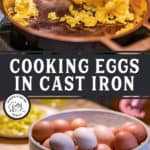
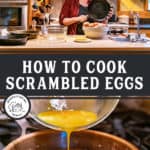
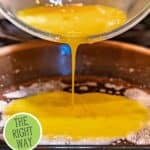






Learning how to cook scrambled eggs, especially in cast iron, takes some getting used to. Once you learn these tips and tricks, your eggs will slide out of your pan with ease, as good as (or better than) a non-stick pan.
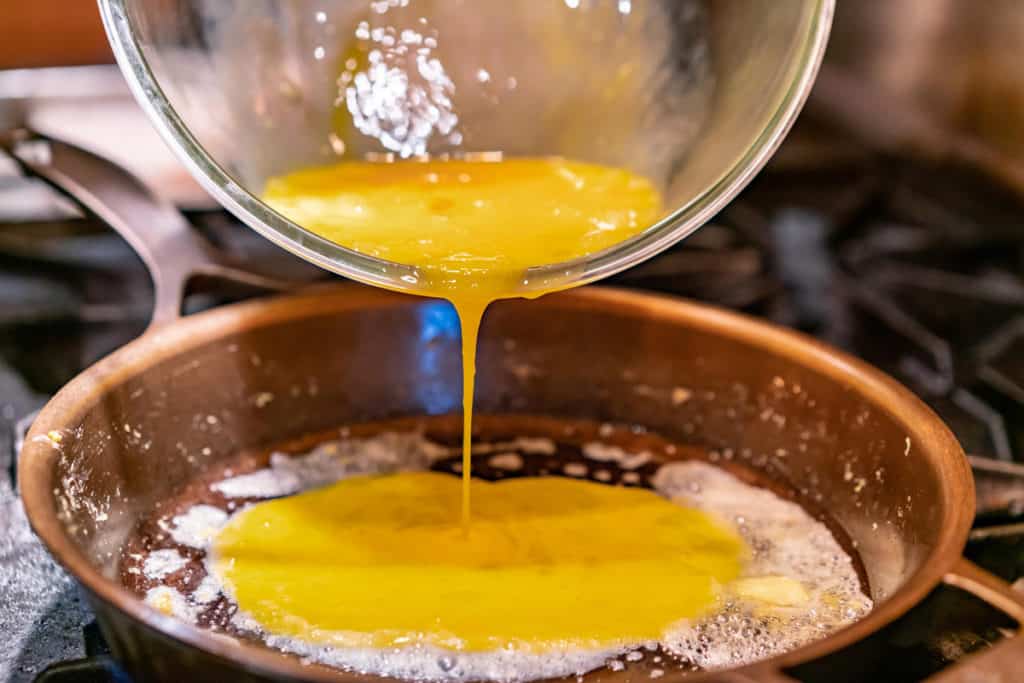
Perfect scrambled eggs don't just happen because you have a well-seasoned cast iron pan (although that is an important necessity), there are a few other tips and tricks that you'll need to know when learning how to cook scrambled eggs in cast iron.
Watch this video to learn the basics! (And if you're curious about the Stargazer cast iron pan I'm using in this video, you can see all the Stargazer cast iron options here.)
Scrambled Eggs Basics
When cooking scrambled eggs in a cast iron pan, there are a few basics that need to happen before you even begin cooking.
- First, choose the right skillet!
- And second, make sure your pan is properly seasoned BEFORE cooking!
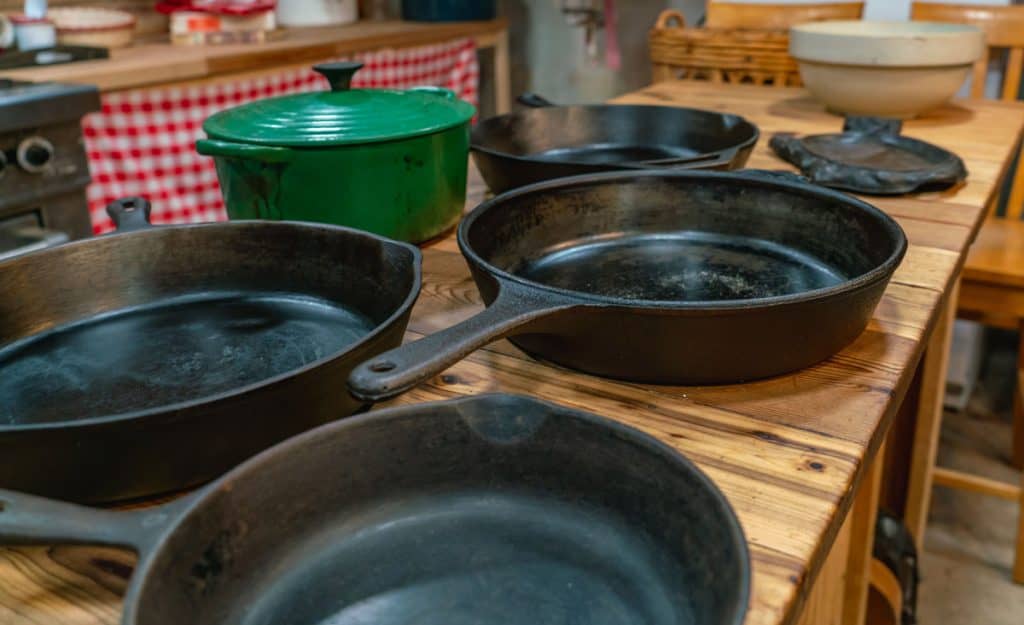
Choose the Right Skillet
Both the kind of cast iron skillet as well as the proper size skillet for the number of eggs you want to cook are imperative to getting light, fluffy eggs that don't stick to your pan.
If you haven't watched my video on how to choose the best cast iron cookware (new or used), then do that first. It can really save you a lot of headaches when trying to cook in a pan that may or may not be the best.
You'll also want to be sure you're using the right size pan for the job. The best rule of thumb is to cook no more than one egg per square inch of your pan.
In the video above, I'm using a 12 inch skillet to cook 11 eggs. If you're cooking four eggs, you could use a 6 inch skillet. Bottom line, don't go above this amount, or too far below this amount.
If you do, your eggs will either take too long to cook and lose their light, fluffiness. Or, they'll cook too quickly and get dry and tough or crumbly.
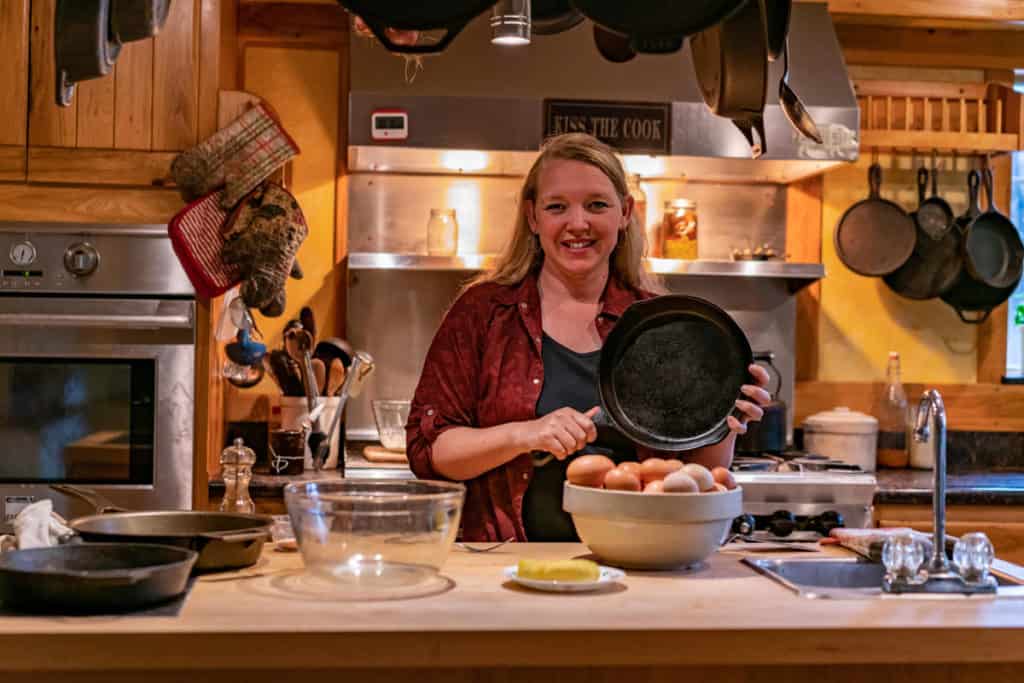
Use a Well-Seasoned Cast Iron Pan
You must make sure your cast iron is properly seasoned. A well-seasoned cast iron pan will cook up the perfect eggs every.single.time. If you're not sure whether or not your pan is seasoned well, or need to learn how to properly strip and season your cast iron skillet, check out our post.
A poorly seasoned cast iron pan will leave you with stuck on, burned eggs and a mess to clean up afterward. It's not only important that your pan is seasoned well, but you must clean and maintain your cast iron between uses to keep up that near non-stick finish.

How to Cook Scrambled Eggs
Cooking scrambled eggs in cast iron couldn't be easier (as long as you've done the first two steps properly).
- Heat
- Whisk
- Water + Seasonings
- Fat in the Pan
- Stir
- Serve
Heat
Before cooking your scrambled eggs, you must first heat your cast iron skillet. If you're cooking on newly seasoned cast iron, you may want to cook some fatty foods a few times before trying something like eggs.
If you know your pan is well seasoned and you're still dealing with sticking, be sure your pan is getting nice and hot before adding your fat and your scrambled eggs.
Put your pan over medium heat to begin getting good and hot.
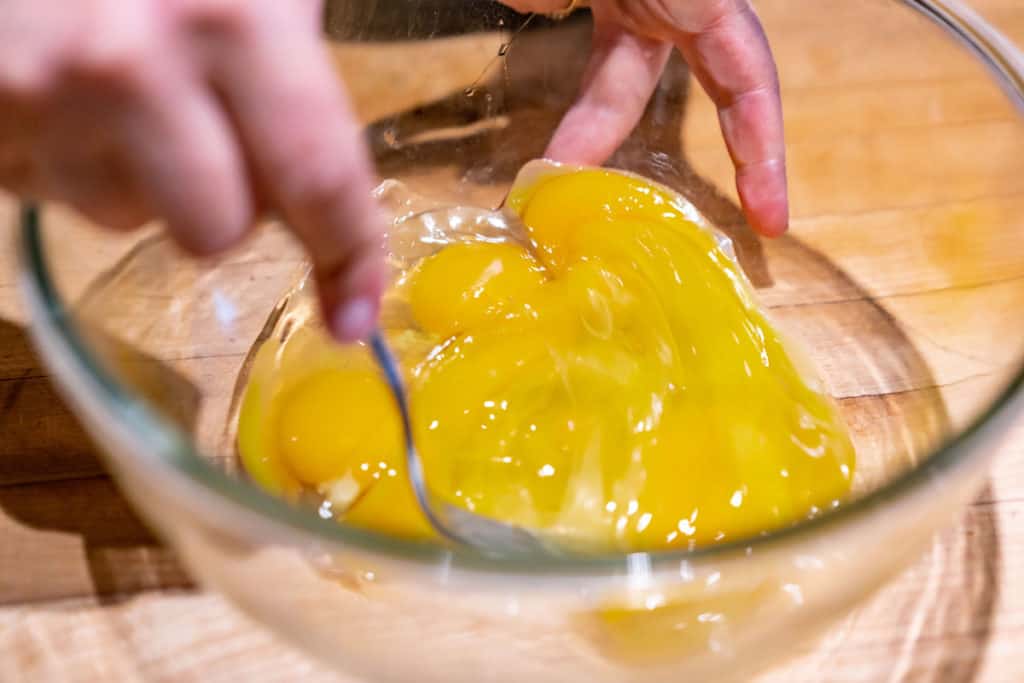
Whisk
After you've cracked your eggs into the bowl (remember, no more than 1 egg per square inch of your pan!), you'll want to whisk the uncooked eggs until they've turned a nice, uniform light yellow color.
Continue to whisk eggs until they turn lighter. This means you've mixed the egg yolks and whites together and incorporated enough air for light and fluffy eggs.
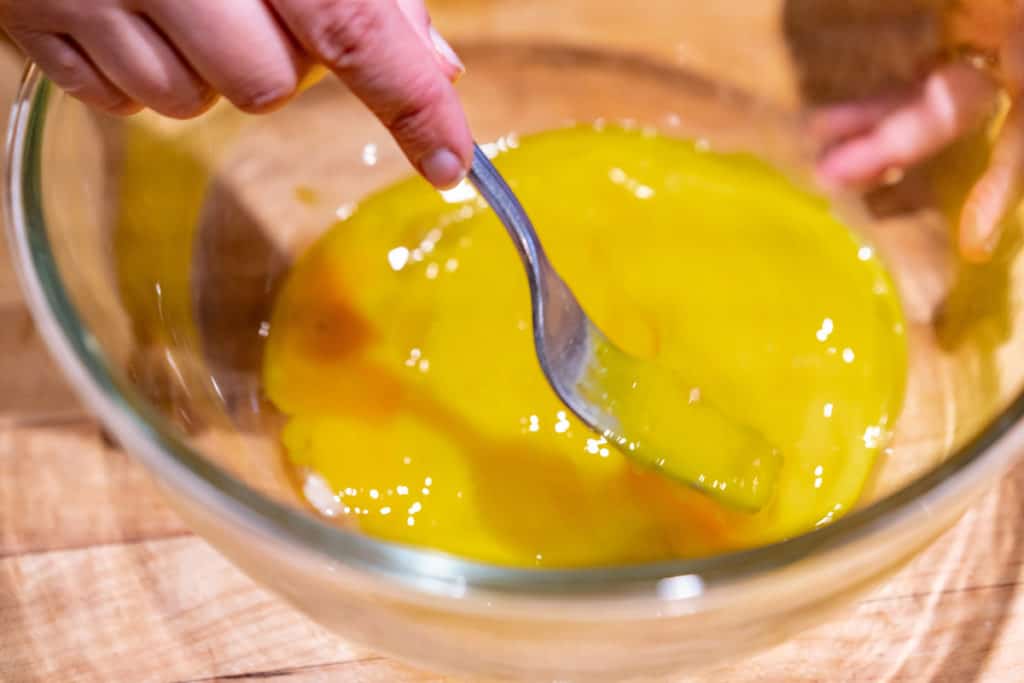
Water + Seasonings
Add a few tablespoons of water to your egg mixture, then season well with salt and pepper. The amount of water will vary depending on how many eggs you're cooking.
I like to add 1/2-1 teaspoon of water per egg, so I'll eyeball just a few tablespoons for my 11 eggs. You can experiment with what works best for you.
Next, salt and pepper your eggs to taste.
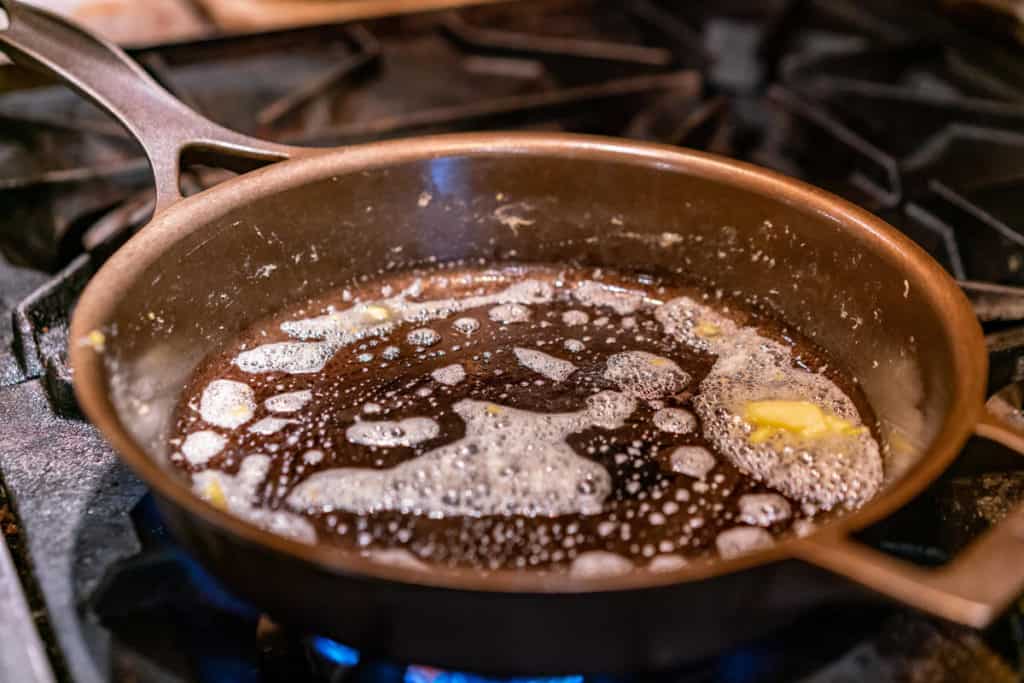
Fat in the Pan
Though a well-seasoned cast iron pan is nearly non-stick, it's not a true non-stick surface like you might think. Teflon and other non-stick pans have unhealthy coatings on them that truly make them non-stick. This allows you to cook eggs and other foods in the pan without fat and they won't stick.
Cast iron needs fat! Without fat, even the most well-seasoned pan will have sticking issues.
Skip the cooking spray and use BUTTER! If you'd rather use coconut oil, that works well, too. I love the flavor the butter adds.
I add about 1-2 Tablespoons of butter to my pan for 11 eggs. Adjust up or down as you'd like.
Once your pan is good and hot, you want to drop your butter into the pan and swirl it around with your spatula. This will brown your butter and give it a nice deep flavor.

Add Eggs and Stir, Stir, Stir
Once you've poured your eggs into your buttered cast iron pan, immediately turn the heat down to low.
Let your eggs cook for about 30 seconds without stirring to set up, then give them a good stir with your spatula, scraping the bottom as you stir constantly.
Your eggs should cook up quite quickly, in less than a minute of constant stirring your eggs will be nearly cooked through.
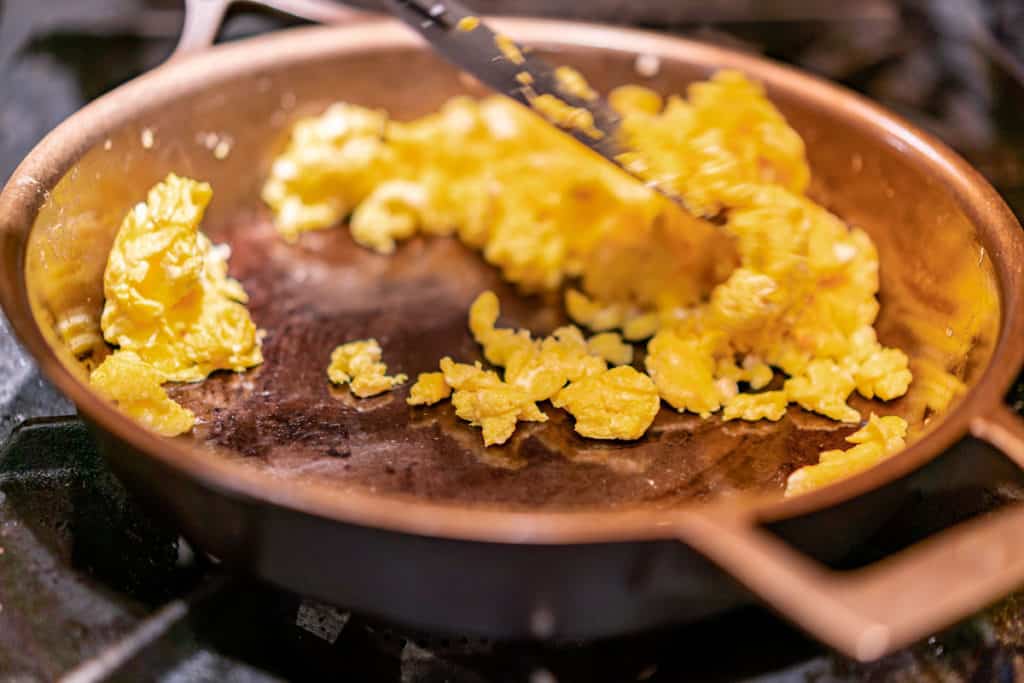
Be particularly aware of any hot spots on the pan (typically just above the direct flame or heating element of your stove.
When the eggs are nearly cooked, but still a bit wet and shiny, turn the heat off and continue stirring and scraping the pan.

Serve
As soon as the eggs are to your liking, take them out of the pan and place directly onto a plate. You don't want to allow your eggs to cool in the pan. This will make your eggs overcooked and it's also not great for your pan.
If your pan is seasoned well, your pan should be nearly spotless. It will only need a quick rinse once it's cooled, then another small layer of seasoning added.
You now have a plate of light, fluffy and delicious scrambled eggs. Enjoy!

- 11 whole eggs
- 2 Tbs water
- 2 Tbs butter
- salt & pepper to taste
-
Place cast iron pan over medium heat to begin preheating.
-
Crack eggs into a large bowl.
-
Whisk until lighter in color and all yolks and whites are incorporated.
-
Add 2 Tbs. water, salt & pepper, then whisk again to combine.
-
Add 2 Tbs. butter to preheated cast iron pan and immediately stir all around pan.
-
Immediately add the eggs and allow them to set up for about 30 seconds.
-
With a metal spatula, continually stir eggs for 2-3 minutes until they're starting to set, but still wet looking.
-
Turn heat off and continue to stir eggs until they're fully cooked.
-
Remove from pan and serve immediately.
- Be sure to allow your cast iron pan to preheat before adding butter or eggs.
- Don't skip the fat! This will keep your eggs from sticking.
- Check here for tips on how to season cast iron.
- Check here for tips on how to maintain and clean cast iron between uses.
Calories: 179 kcal | Carbohydrates: 1 g | Protein: 12 g | Fat: 14 g | Saturated Fat: 6 g | Cholesterol: 372 mg | Sodium: 178 mg | Potassium: 134 mg | Sugar: 1 g | Vitamin A: 663 IU | Calcium: 54 mg | Iron: 2 mg
We want to see! Tag @homesteadingfamily on Instagram.
More Egg Recipes
- 5 Ways to Use or Preserve Eggs
- Water-Glassing Eggs (for long-term preservation)
- How to Freeze Eggs
- How to Freeze Dry Eggs
- Pickled Eggs
- Homemade Egg Noodles
- How to Handle Farm Fresh Eggs
Cooking Eggs In Cast Iron
Source: https://homesteadingfamily.com/how-to-cook-scrambled-eggs-in-cast-iron/
Posted by: trippcopievere.blogspot.com

0 Response to "Cooking Eggs In Cast Iron"
Post a Comment